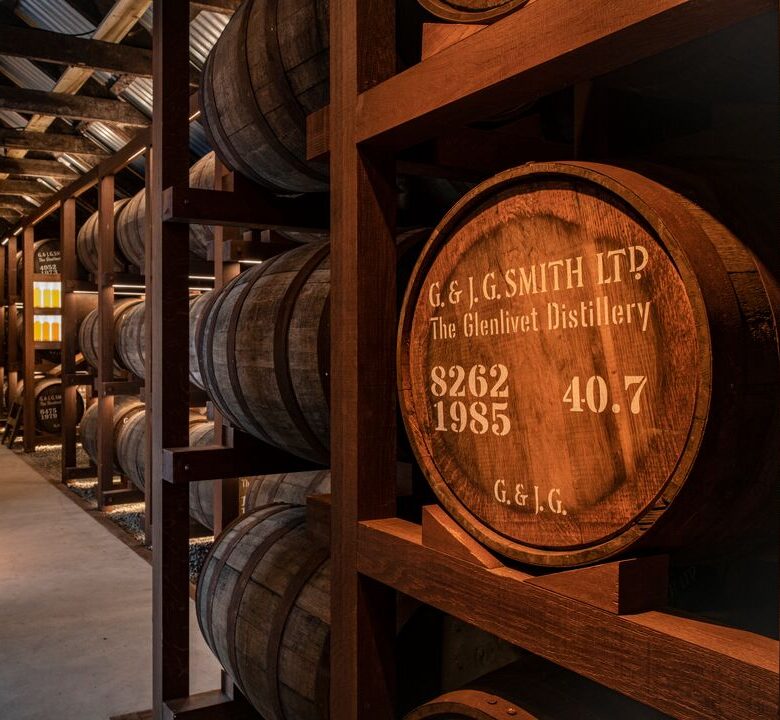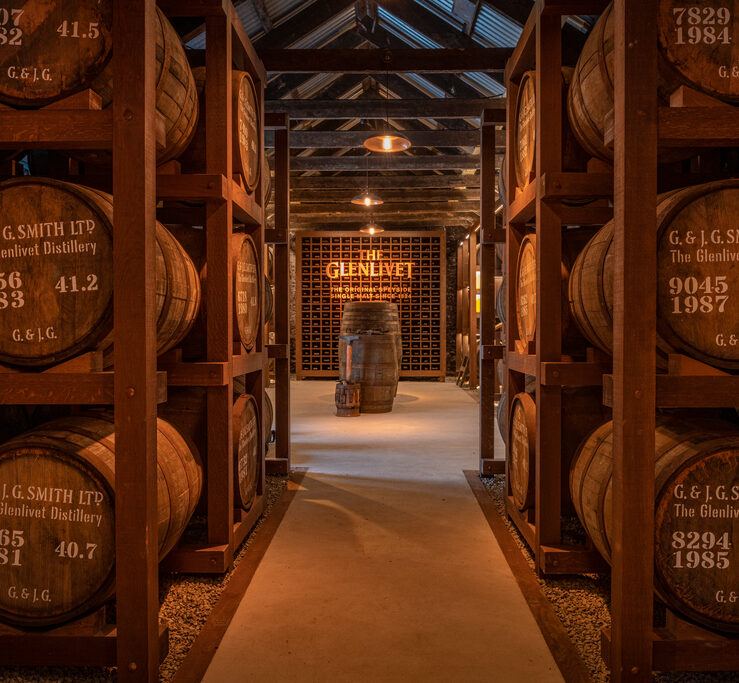
Fermentation is an important part of how scotch is made. In fact, the Scotch Whisky Act 1988 stipulates that for a whisky to be defined as a scotch, it must have been “converted to a fermentable substrate only by endogenous enzyme systems” and “fermented only by the addition of yeast”. But what does that mean?
There’s a lot of intricate science behind it but in essence, it refers to the biochemical processes that occur when yeast triggers the conversion of sugars into alcohol. This stage in whisky production may not come first but it arguably creates the foundation on which the profile of each and every scotch is built.
To fully appreciate just how important whisky fermentation is to the complexities of the spirit, this whisky guide gives you a deeper dive into fermentation, including when, where and how it takes place, and its impacts on whisky’s flavour.
What is fermentation?
At its very simplest, fermentation is a process where enzymes break down a substance into a smaller substance. It is used in the production of beers, wines, and spirits as well as foods such as yoghurt, sourdough bread and some cheeses.
It is a crucial step in whisky production. After the mashing stage, where starches from the barley are converted into sugars, the sugary liquid, known as wort, is then fermented.
Yeast, which is a single-celled microorganism, is added to the wort, and this initiates fermentation. The yeast eats the sugars, converting them into alcohol, carbon dioxide and other compounds. There are two stages of fermentation, known as the lag phase and the bud phase.
The lag phase occurs when the yeast is first added to the wort. It takes a little time for the yeast to acclimatise to its new environment. Once the yeast has sussed it all out, it then starts to ‘bud’. In this phase, it begins to reproduce asexually and the more sugar there is, the faster the yeast grows, and the quicker fermentation occurs. Eventually, all the sugar is consumed by the yeast and the yeast dies.
When does whisky fermentation take place?
Whisky fermentation is typically the third stage of whisky production. Malting is the first. This stage involves barley being steeped in water before being spread out onto floors and left to germinate. This causes enzymes to be activated that are imperative to the next stage. After about a week, the barley is dried in a kiln to halt germination and the next stage, mashing, takes place.
The dried malt is ground into a coarse grist which is combined with hot water. The enzymes activated during malting get to work, breaking down long starch molecules from the barley into sugar. It is after mashing, once the liquid wort is produced, that fermentation then occurs.
Where does whisky fermentation take place?
Whisky fermentation usually occurs in large fermentation vessels or tanks called whisky washbacks. They are typically made of stainless steel or wood. At The Glenlivet Distillery, fermentation takes place in traditional wooden washbacks made from Oregon pine.
What are the byproducts of whisky fermentation?
The products that are made as a result of fermentation are why it is so critical to scotch. While some are discarded, much of what is created in this process is carried forward into the next stage of whisky production within a liquid known as the ‘wash’.
Alcohol
The primary byproduct of fermentation is ethanol, which is the alcohol content of whisky. Ethanol characterises the alcoholic strength of the final whisky product and is separated from the water, yeast, and residues within the wash during distillation.
Carbon Dioxide
Another byproduct of fermentation is carbon dioxide (CO2). This gas is released as a result of the yeast metabolising the sugars in the wort. In traditional fermentation vessels, such as open-topped wooden washbacks, it’s normal to see bubbles of CO2 escaping. This can be quite a violent spectacle that even causes the fermentation vessels to shake!
Heat
Fermentation is an exothermic process, meaning it generates heat. In a controlled environment, such as a distillery fermentation tank, this heat must be managed to ensure optimal conditions for yeast activity and is typically maintained between 20°C and 32°C.
Acids
Fermentation can produce various organic acids, including acetic acid, and lactic acid, among others. These acids contribute to the overall flavour profile of the whisky, adding complexity and acidity.
Esters and other flavour compounds
Yeast also produces a range of flavour compounds during fermentation including esters, aldehydes, and higher alcohols. These compounds contribute to the aroma and flavour profile of the whisky, providing fruity, floral, or spicy notes.
How does fermentation impact whisky flavour?
As we’ve already mentioned, during fermentation, yeast produces various compounds, including alcohols, esters, and acids, all of which contribute to the aroma and flavour of the final expression.
However, factors such as the type of yeast used, fermentation temperature, and duration can all influence the flavour characteristics of the whisky as well. For example, lower fermentation temperatures generally create whisky types with cleaner, crisper profiles whereas higher temperatures can result in bolder, fruitier flavours.
How long is whisky fermented?
The duration of whisky fermentation can vary depending on several factors, including the specific recipe, the desired flavour profile, and a distillery’s practices. An average fermentation time is between 60 and 75 hours. Anything under 60 hours is considered a short fermentation while anything above 75 hours is deemed a long fermentation.
Does whisky continue to ferment in the bottle?
No, whisky does not continue to ferment once it has been bottled. Fermentation requires the presence of yeast, sugars, and suitable conditions, such as an optimal temperature and oxygen, all of which are absent in sealed whisky bottles. Once distilled and bottled, whisky undergoes minimal chemical changes. Age-related processes such as oxidation and interaction with the bottle and cork can occur but fermentation finishes once the whisky leaves the washback.
If now you understand the fundamentals of fermentation you’re keen to continue expanding your whisky knowledge, take a look at our other articles which explain the importance of cask selection, explore the difference between barrel and cask, and reveal what is meant by angels share whisky.



